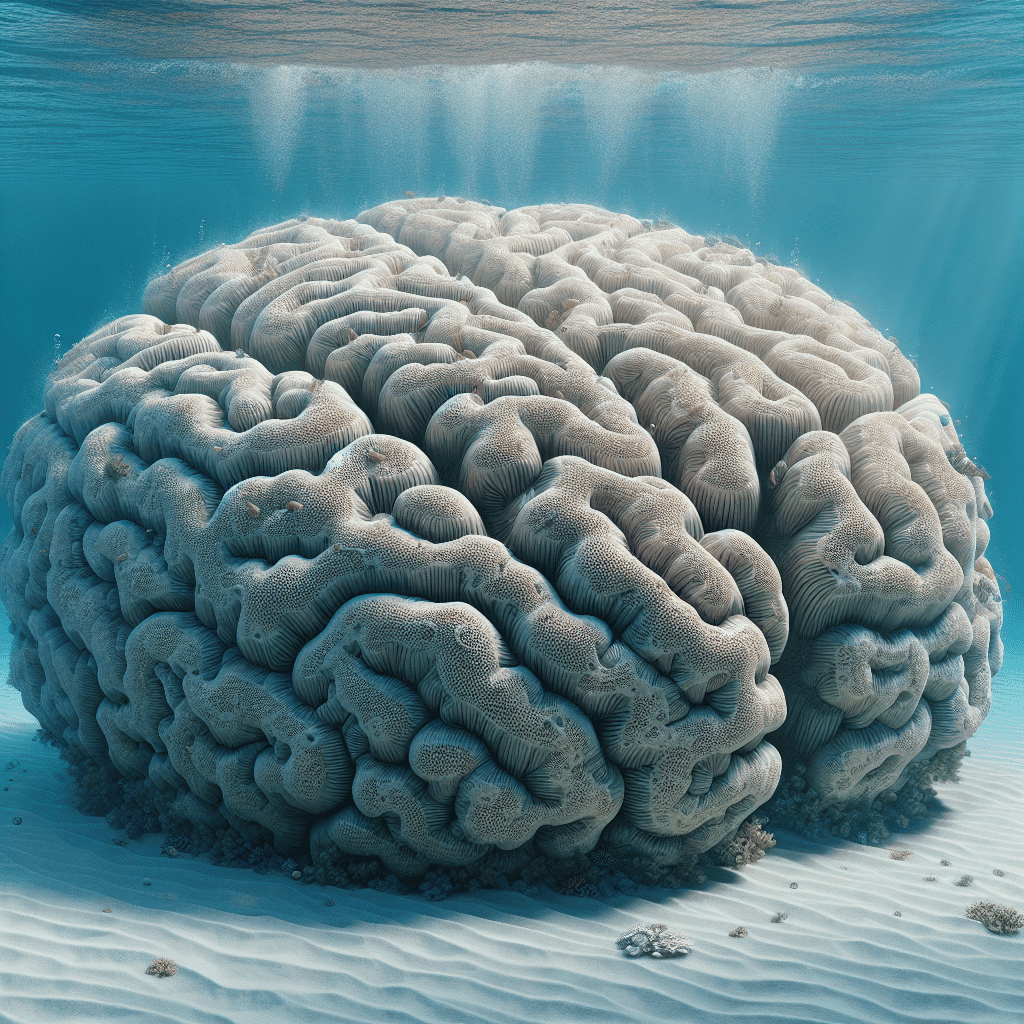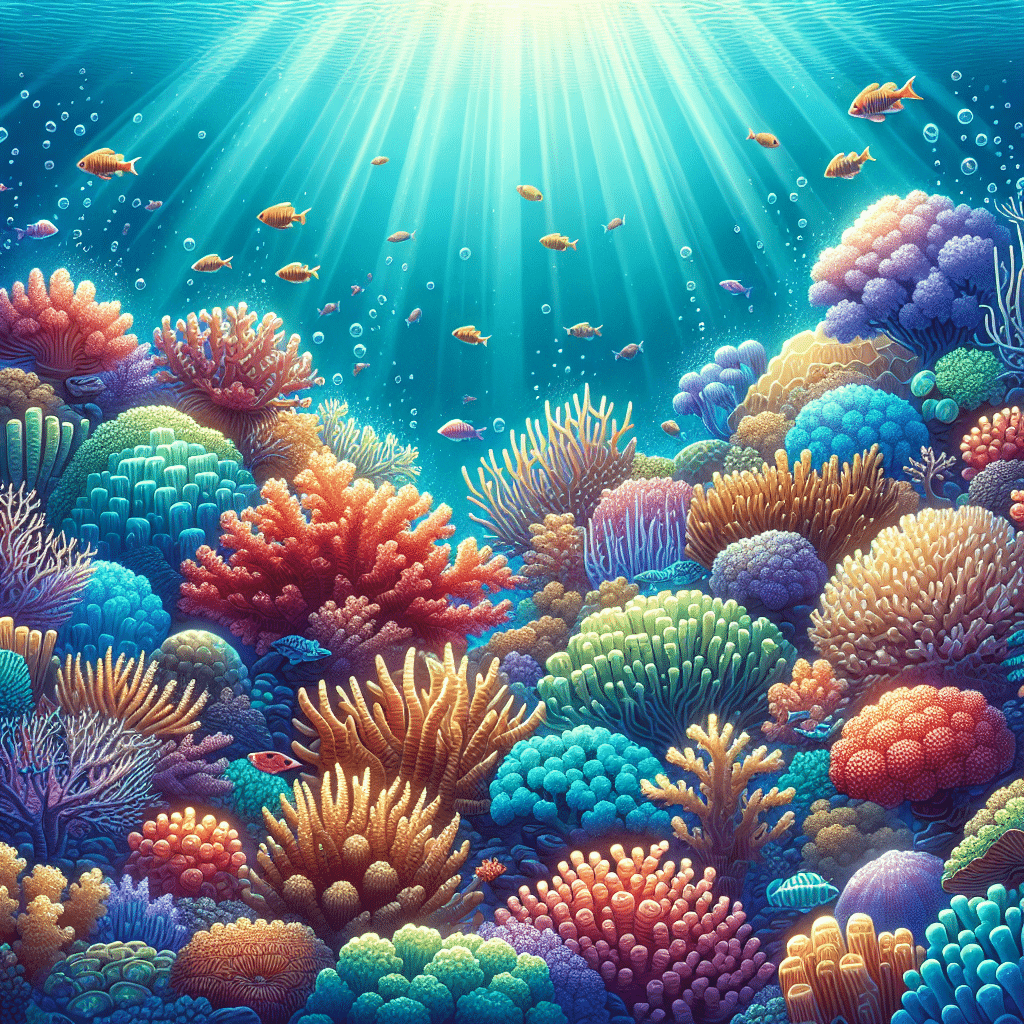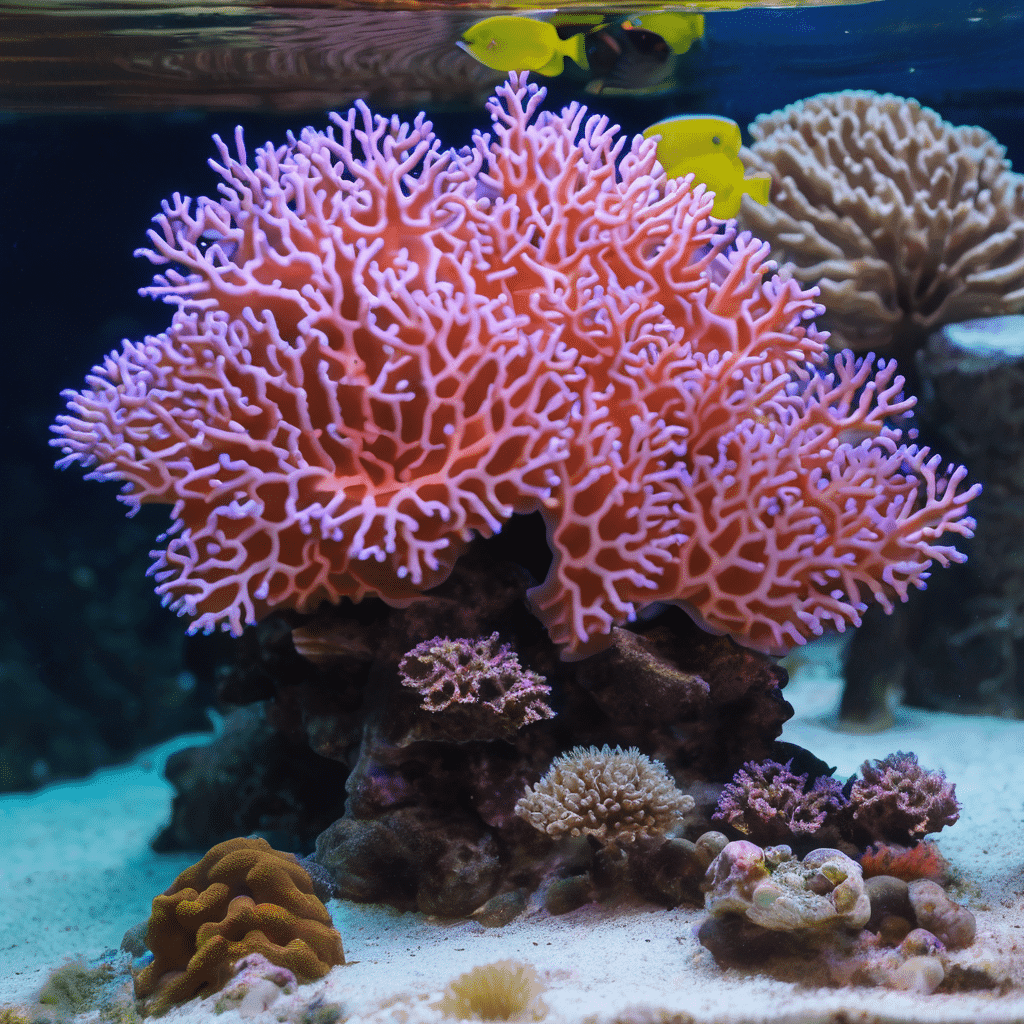Introduction to Brain Corals
Overview of Brain Corals
I’ve always been fascinated by brain corals. They are unique and captivating creatures that belong to the phylum Cnidaria, under the class Anthozoa, often referred to as “flower animals.” Brain corals are typically found in shallow, warm water coral reefs across all of the world’s oceans. These corals are known for their distinct, convoluted appearance that resembles a human brain. They not only add beauty to a reef tank but also play a significant role in the marine ecosystem.
Brain corals are generally easy to care for in a reef aquarium, making them a good choice for beginner hobbyists. However, it’s important to understand that they still have specific requirements that must be met for their health and longevity. For more information on various types of corals, check out our section on corals.
Lifespan and Habitat
The lifespan of brain corals is truly impressive. They can live for over 800 years, with some individuals reaching up to 900 years (Light Fish). These corals can grow to be quite large; for instance, some of the largest brain corals, like the Toboggan boulder brain coral, can stretch over 16 feet wide and 10 feet tall.
In terms of growth, brain corals are slow growers, typically adding about an inch per year. This growth rate applies both in their natural habitat and in reef aquariums (Light Fish). Providing the right conditions in a fish tank is crucial for promoting healthy growth.
Here’s a quick overview of brain corals’ key characteristics:
| Attribute | Description |
|---|---|
| Lifespan | Over 800 years |
| Maximum Size | Up to 16 feet wide and 10 feet tall |
| Growth Rate | Approximately 1 inch per year |
| Habitat | Shallow, warm water coral reefs |
Understanding the lifespan and habitat of brain corals can help me provide better care in my reef tank. They thrive in well-maintained environments that mimic their natural habitats, ensuring they remain vibrant and healthy.
Characteristics of Brain Corals
Brain corals are fascinating creatures that add a unique touch to any reef tank. Let’s dive into their physical features and feeding behavior to better understand these corals.
Physical Features
Brain corals are easily recognizable due to their distinctive appearance, resembling the folds and grooves of a human brain. They have a hard surface that provides excellent protection against predators and environmental stressors. The surface is divided into valleys and ridges that are not just for looks; they also serve practical purposes in the coral’s life.
These corals can grow quite large, with some colonies reaching over six feet in diameter and living up to 900 years. They usually expand at a slow growth rate, typically growing less than an inch per year, although the fastest-growing types can expand at more than six inches annually (Texas Saltwater Fishing Magazine).
| Feature | Description |
|---|---|
| Shape | Grooved, resembling a brain |
| Surface | Hard, providing protection |
| Growth Rate | Less than 1 inch per year (up to 6 inches) |
| Lifespan | Up to 900 years |
| Maximum Size | Over 6 feet in diameter |
Feeding Behavior
Brain corals are nocturnal feeders, extending their tentacles at night to catch food. During the day, they retract their tentacles and use them to cover their grooves, providing an additional layer of protection against fish and environmental disturbances like hurricanes (Wikipedia).
These corals are semi-aggressive and can even attack neighboring corals using their sweeper tentacles, which can extend up to 5 inches. This behavior is important to consider if you’re planning to place them in a reef tank with other corals.
They primarily feed on zooplankton and other small particles in the water, which they capture using their tentacles. Ensuring a proper feeding regimen in a reef tank is crucial for their health and well-being. For more details on care, check out my article on corals.
Overall, understanding these characteristics can help me create a thriving environment for brain corals in my reef tank.
Types of Brain Corals
When it comes to brain corals, there are a couple of fascinating types that stand out: grooved brain coral and symmetrical brain coral. Each has its own unique characteristics and care requirements, making them interesting choices for any reef tank enthusiast.
Grooved Brain Coral
Grooved brain coral, scientifically known as Diploria labyrinthiformis, is a large, reef-building coral found primarily in the Caribbean Sea and surrounding regions, including Florida and Bermuda. This coral creates impressive circular structures that can grow over 6 feet in diameter. It’s interesting to note that only the outer few millimeters of these structures represent living tissue; the bulk is made up of a calcium carbonate skeleton. These corals grow slowly, adding just a few millimeters each year, and can be hundreds of years old!
| Feature | Detail |
|---|---|
| Scientific Name | Diploria labyrinthiformis |
| Habitat | Caribbean Sea, Florida, Bermuda |
| Diameter | Over 6 feet |
| Growth Rate | Few millimeters per year |
| Lifespan | Hundreds of years |
These corals are home to symbiotic algae that live within their cells, which provide them with extra energy through photosynthesis. They also filter feed on small zooplankton and other food from the water, which not only helps them but also nourishes the algae. It’s essential that these corals live in clear, shallow waters to thrive. Despite facing challenges like coral bleaching and pollution, grooved brain coral populations are still relatively common and are considered of least concern in conservation status.
Symmetrical Brain Coral
Symmetrical brain coral, another intriguing type, is known for its unique structure and growth patterns. While specific details may vary, this coral typically features rounded lobes and valleys, creating a distinctive symmetrical appearance. This type of brain coral can also form large colonies that contribute significantly to reef ecosystems.
| Feature | Detail |
|---|---|
| Structure | Rounded lobes and valleys |
| Appearance | Distinctively symmetrical |
| Ecosystem Role | Important for reef building |
Like the grooved brain coral, symmetrical brain coral also engages in symbiotic relationships with algae and relies on both photosynthesis and filter feeding. Maintaining appropriate water quality and light conditions is vital for the health of these corals in a reef tank.
Both types of brain corals can add beauty and complexity to your reef setup. Whether you choose grooved or symmetrical brain coral, make sure to provide the right care, including proper placement, feeding, and water quality, to help these corals thrive. For more information on different coral species, check out our articles on corals, mushroom coral, and torch coral.
Care and Maintenance
Caring for brain corals in a reef tank can be a rewarding experience. I’ve found that proper placement, feeding, and water quality are key to keeping these corals healthy and thriving.
Placement and Location
When it comes to placing brain corals, I recommend selecting a location that offers moderate water flow and indirect lighting. Brain corals are adaptable, but they perform best in conditions that mimic their natural habitat. Here are some tips for placement:
- Water Flow: Moderate flow helps to provide nutrients while preventing debris from settling on the coral. Avoid strong currents that can stress the coral.
- Lighting: Brain corals prefer lower to moderate lighting. Too much direct light can cause stress and bleaching. It’s often best to place them on the substrate or lower in the tank.
- Space: These corals can grow quite large, so ensure they have enough space to expand. Some species can reach impressive sizes, such as the Toboggan boulder brain coral, which can grow over 16 feet wide Light Fish.
| Placement Considerations | Recommendations |
|---|---|
| Water Flow | Moderate |
| Lighting | Low to Moderate |
| Space | Allow for expansion |
Feeding and Water Quality
Feeding brain corals is essential for their health. These corals extend their tentacles to catch food at night, which is when they actively feed. Here’s what I do for feeding:
- Feeding Schedule: I usually feed them once or twice a week with a mix of coral food, like plankton or other marine foods suitable for corals.
- Feeding Technique: I gently target feed the coral to ensure they get enough nutrition. It’s fascinating to watch them extend their tentacles and capture food.
Water quality is also critical for brain corals. I monitor the following parameters regularly:
- Salinity: Keep it around 1.023 to 1.025 specific gravity.
- pH: A stable pH between 8.1 and 8.4 is ideal.
- Ammonia, Nitrite, and Nitrate Levels: Ammonia and nitrite should be at 0 ppm, while nitrates should be kept below 10 ppm for optimal health.
| Water Quality Parameters | Ideal Range |
|---|---|
| Salinity | 1.023 – 1.025 SG |
| pH | 8.1 – 8.4 |
| Ammonia | 0 ppm |
| Nitrite | 0 ppm |
| Nitrate | <10 ppm |
Maintaining these parameters ensures that my brain coral thrives and grows, as they are slow growers, typically only about an inch per year in both oceans and reef aquariums Light Fish. Regular monitoring and proper care will lead to a vibrant and healthy brain coral in my reef tank.
Growth and Reproduction
Growth Rate
I find brain corals to be fascinating not just for their appearance but also for their growth patterns. These corals are known for their slow growth rate, which typically averages less than an inch per year in both the ocean and reef aquariums. However, some species can grow a bit faster, with a maximum growth rate of more than six inches annually.
Here’s a quick overview of the growth rates:
| Coral Type | Growth Rate (inches/year) |
|---|---|
| Most Brain Corals | < 1 |
| Fastest Growing Species | > 6 |
| Average Growth Rate | ~1 |
Interestingly, brain corals can grow outward at a rate of about 3.5 millimeters per year. Given the right conditions, they can reach impressive sizes, sometimes growing over six feet in diameter. It’s also worth noting that these corals have an extraordinary lifespan, living for over 800 years, with some even reaching up to 900 years (Light Fish).
Reproductive Strategies
When it comes to reproduction, brain corals have a couple of strategies that they employ. They can reproduce both sexually and asexually, which is pretty neat.
Sexual Reproduction:
- This typically occurs during specific times of the year, usually correlating with lunar cycles. During this period, brain corals release sperm and eggs into the water, where fertilization happens externally. The resulting larvae eventually settle on the ocean floor and develop into new coral polyps.
Asexual Reproduction:
- Brain corals can also reproduce asexually by budding. This means that new polyps can form from the parent coral, allowing it to expand and cover more area. As a result, this method can help them recover from damage and grow larger over time.
Understanding these growth and reproductive strategies is key for anyone interested in keeping brain corals in their reef tanks. It helps to know what to expect in terms of growth and how to support their reproduction in a home aquarium setting.
Threats to Brain Corals
Climate Change Impacts
Brain corals face several threats, primarily due to climate change. Rising water temperatures can lead to coral bleaching, a process where coral polyps expel their symbiotic zooxanthellae algae. This not only affects the coral’s color but also leads to starvation or disease (Texas Saltwater Fishing Magazine). Additionally, ocean acidification is an increasing concern. As the ocean becomes more acidic, it becomes harder for corals to build their calcium carbonate skeletons, and existing structures can begin to dissolve. Scientists predict that by 2085, ocean conditions may be acidic enough to dissolve corals globally. This could lead to the loss of many coral reefs by the end of the century.
| Threat | Description |
|---|---|
| Coral Bleaching | High temperatures cause corals to expel algae, leading to starvation. |
| Ocean Acidification | Difficulty in building skeletons and potential dissolution of existing corals. |
Conservation Efforts
Despite these challenges, there are ongoing conservation efforts aimed at protecting brain corals and their habitats. While some species, like grooved brain coral, are still relatively common and considered of least concern in terms of conservation status (Oceana), it’s crucial to monitor and protect these ecosystems. Conservation strategies include creating marine protected areas, regulating fishing practices, and restoring damaged reefs. By promoting sustainable practices and increasing awareness of the importance of coral reefs, I can contribute to the efforts to protect these vital marine ecosystems.
For those interested in caring for corals in a reef tank, it’s vital to understand the ecological role of corals and the threats they face. You can learn more about different types of corals, such as black coral, mushroom coral, and staghorn coral, to help create a healthy environment for your aquatic friends.
Importance of Brain Corals
Ecosystem Role
Brain corals play a vital role in the health and stability of reef ecosystems. As a type of coral, they provide habitat for various marine organisms, contributing to the overall biodiversity of the reef. Coral reefs are believed to host the highest biodiversity of any ecosystem on the planet, supporting more than 25% of all marine life despite covering less than one percent of the ocean floor (Coral Reef Alliance).
By forming the structure of the reef, brain corals create a complex environment that offers shelter and breeding grounds for numerous species, including fish, crustaceans, and other invertebrates. Various species within coral reef ecosystems have specific roles, such as herbivores that consume algae to prevent coral smothering and predatory fish that maintain balance among smaller fish populations (Coral Reef Alliance).
Biodiversity Support
In addition to their structural contributions, brain corals help foster a highly biodiverse ecosystem. The presence of diverse species in a coral reef contributes to its resilience, enabling it to withstand changing conditions and significant disturbances (Coral Reef Alliance).
Brain corals, along with other coral types, are part of a larger community that includes sea sponges, oysters, clams, and various fish species. These organisms interact with each other, creating a dynamic ecosystem that supports both marine life and human interests, such as medicinal compounds derived from reef species.
In my experience as a reef tank hobbyist, maintaining brain corals not only enhances the aesthetic appeal of the tank but also contributes to the overall health and biodiversity of the marine environment. For those interested in adding more variety, exploring other types of corals like mushroom coral and acropora can also be beneficial.
Research and Development
Coral Restoration Projects
Coral restoration projects are crucial for preserving coral species, including brain corals, which face numerous challenges due to climate change and other environmental threats. Recently, a team successfully brought back 21 symmetrical and grooved brain corals from the middle of Tela Bay in Honduras, alongside 13 elkhorn coral fragments from shallower depths of about 10 feet. This kind of initiative is vital for ensuring that these species can adapt and thrive in changing ocean conditions.
One significant project is the X-Reefs initiative funded by the U.S. Department of Defense. This project aims to produce heat-resilient corals, particularly elkhorn corals. These resilient corals are essential for larger restoration efforts that protect Florida’s coastlines from storm surges and erosion. Such projects not only focus on restoration but also on enhancing the genetic diversity of coral populations to improve their resilience against environmental stresses.
Future Prospects
The future of brain corals and other coral species depends heavily on ongoing research and development efforts. A significant concern is the rising ocean temperatures and acidification, which threaten the survival of these corals. Scientists predict that if current trends continue, ocean conditions might become acidic enough to dissolve corals globally by 2085, severely impacting coral reefs (Texas Saltwater Fishing Magazine).
To combat these threats, further research is being conducted on the biology and ecology of corals. This research informs management decisions and helps enhance recovery efforts for various threatened coral species. For instance, NOAA Fisheries is actively studying staghorn coral populations to assess their status and the effectiveness of conservation measures (NOAA Fisheries).
As hobbyists, staying informed about these developments can help us better care for our own reef tanks and contribute to broader conservation efforts. For tips on maintaining a healthy reef environment, check out our other articles on corals and specific species like torch coral and acropora.



